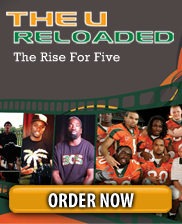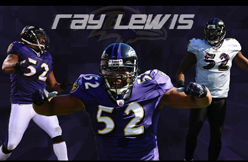Ray Lewis is injured and will not play again this season. Given that he will be 38 years old in 2013, his illustrious career might be over. The garish yellow jacket of Canton induction is in his future. How should Lewis be assessed?
The minor question is whether Lewis was tailing off this year. The answer is: Of course he was -- he was playing as an NFL linebacker at age 37. Sunday, Lewis whiffed badly on what looked to be a routine tackle at the line of scrimmage, allowing Felix Jones of Dallas a 22-yard touchdown run. In 2010, the Ravens' defense was fifth against the rush; in 2011, it was second; after Sunday, it was 26th. Father Time is catching up to others on the Baltimore front, too. But Lewis' decline is obvious. Traditionally teams run away from him; this season they've run at him. The reason is aging, a human condition that appears irreversible.
So how to assess Lewis? The positive are many: Super Bowl ring, two defensive Player of the Year awards, an amazing 12 Pro Bowl trips. Among the few middle linebackers of the modern era who do not come off the field on passing downs (Brian Urlacher and London Fletcher head the short list of others). Active in public service. And in an era of me-first job-hopping by players and coaches alike, Lewis has spent his entire 17-season career in the same place. He might be the last of a dying breed in terms of loyalty to team and city.
The negative: Lewis has a criminal record, from pleading guilty to a serious crime. He cannot be understood without this context, which in recent years has been strangely absent from sportscasting and sportswriting.
In 2000, Lewis and two other men were charged with murder in Fulton County, Ga. (Atlanta). The murder charge was dropped when Lewis pleaded guilty to obstruction of justice and agreed to testify against the friends he had been with when the friends stabbed two men to death after a Super Bowl party. Lewis admitted lying to police, and based on his testimony, the best-case reading of his actions is that a huge, muscular NFL player stood by doing nothing while his companions killed a pair of men. The companions subsequently were acquitted on grounds of self-defense; it was suggested, though never proved, that the two men killed threatened Lewis' group with a gun. Society might never know for sure what happened that night. When a desperate fight occurs in the dark, even the people involved might never know for sure what happened.
Until the killings, Lewis had a reputation as a man to be feared. Since the killings, his reputation has changed: Now it is of a hard-nosed football player, but a kind person off the field. He talks to youth groups. He is tireless in having his photograph taken with strangers, something many NFL celebrities dislike. (I have observed Lawrence Taylor become angry when approached by kids for a photograph.) He is unfailingly accessible to the media, which many NFL players consider their enemy. He smiles and stops to help people.
That is -- Lewis, by appearances, is redeemed. No one can know what is in another person's heart. But since 2000, Lewis has seemed a changed man. And this is more important than his achievements as a football player.
The world is full of impressive athletes, and full of men who have done bad things and gotten away with it. There is a distinct shortage of those who have made themselves better people.
Assuming Lewis leaves the NFL, reporters and conventional audiences will want him to tell amusing anecdotes of his experiences his famous football players. He should tell awkward, unpleasant anecdotes about his own life. Lewis' experiences with himself are the essence to assessing him. The saying goes: What happens to a man matters less than what happens inside a man. In Lewis' case, it seems that what happened inside was good.
In football-tactics news, since when do teams try to set up very long field goals? Baltimore leading 31-29, the Cowboys had first down on the Nevermores' 34 with 26 seconds remaining, holding a timeout. Rather than run another play to improve field position, Dallas let the clock tick down to six, used the timeout, then watched the placekicker miss a 51-yard attempt. This botched sequence was partly due to wide receivers Miles Austin and Kevin Ogletree, who had gone deep on the previous snap, walking, not running, back toward the huddle. Still, 'Boys coach Jason Garrett had not prepared the team by calling two plays. A 51-yarder is automatic -- is that what they teach at Princeton?
This proved nothing compared to St. Louis coach Jeff Fisher's decision. Trailing Miami by three points, the Rams had fourth-and-7 on the Dolphins' 48 with 31 seconds remaining, holding a timeout. Rather than go for a first down to improve field position, Fisher let the clock tick, using the timeout at four seconds. Fisher set up a 66-yard field goal attempt. Which, shockingly, did not succeed.

(espn.com)



